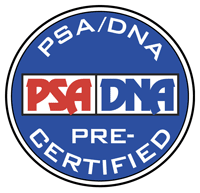TLS signed “N. Tesla,” one page, 8 x 10.5, personal letterhead, July 25, 1894. Letter to research engineer, patent attorney, and inventor Noah Steiner Amstutz, in full: “I am receiving a great many communications such as yours of July 24th, and it is impossible for me to answer them all. I hope that you will have the kindness to remember this should a letter of that kind remain unnoticed. The identical experiment which you illustrate was performed by Messrs. Spottiswoode, Gordon and others a very long time ago, and the same observation was made in regard to the properties of the current when the breaking was rapid. I think that in your experiment the strength of the current was reduced and the E.M.F. increased when the wheel was more rapidly rotated. You have probably got in this case less energy through the body. It is difficult to say exactly what the result in your case was, because it depends entirely on the electrical constants of the circuits and on the rate of breaking.” In fine condition.
The recipient, Noah Steiner Amstutz (1864-1957), a research engineer, cartographer, and patent attorney from Cleveland, Ohio, is best remembered as a pioneer in the fields of television and facsimile transmission, whose 1896 copying telegraph system was a precursor to the fax machine. His experiment, described by Tesla as “identical” to the type performed by William Spottiswoode and James Edward Henry Gordon very likely relates to their early investigations on induction coils, a subject in which Tesla was most acutely informed.
Tesla's experience with induction coils began while working for inventor Thomas Edison in the late 1880s. While Edison was interested in improving the efficiency of his direct current (DC) electrical power system, Tesla, conversely, was an advocate for alternating current (AC) as a more effective solution. To demonstrate the power of AC, Tesla built a series of induction coils that could generate high-frequency, high-voltage electrical currents.
His most famous induction coil was the Tesla coil, which he patented in 1891. The Tesla coil uses two coils of wire, one of which is connected to a power source and the other of which is not. The power source generates a high-voltage, high-frequency current in the first coil, which creates a changing magnetic field that induces a current in the second coil. The resulting electrical discharge can create spectacular visual effects, such as lightning-like sparks and glowing gas tubes.
Tesla's work with induction coils was instrumental in the development of AC power systems, which became the dominant form of electrical power transmission in the early 20th century. His inventions and innovations continue to influence modern technology, including radio and wireless communication, robotics, and electric motors. A magnificent letter from Tesla, who, although quite busy, offers his scientific input to a fellow inventor.

This item is Pre-Certified by PSA/DNA
Buy a third-party letter of authenticity for
$150.00
*This item has been pre-certified by a trusted third-party authentication service, and by placing a bid on this item, you agree to accept the opinion of this authentication service. If you wish to have an opinion rendered by a different authenticator of your choosing, you must do so prior to your placing of any bid. RR Auction is not responsible for differing opinions submitted 30 days after the date of the sale.
We use cookies on this site to improve your experience. By using this site, you accept our use of cookies. To learn more, please see our Privacy Policy.